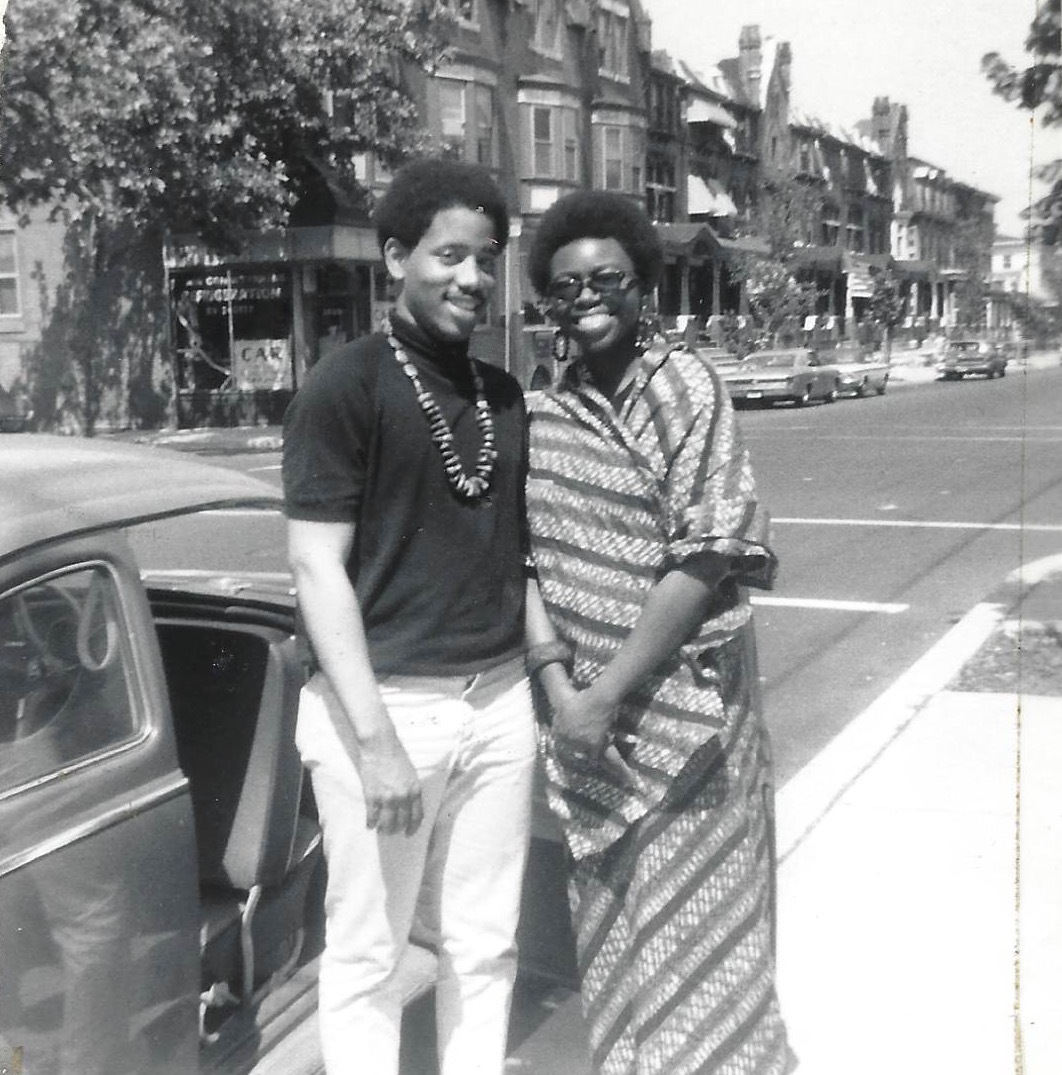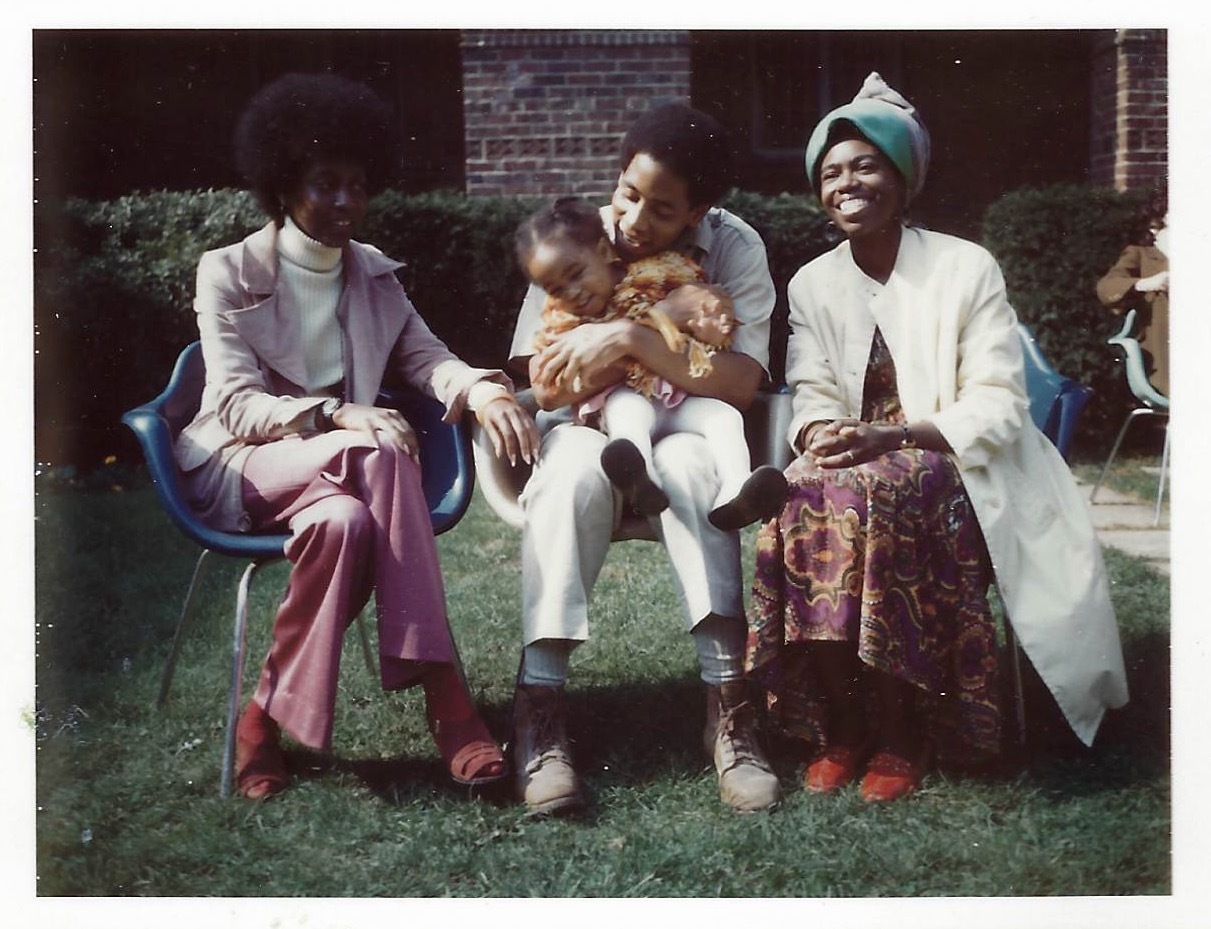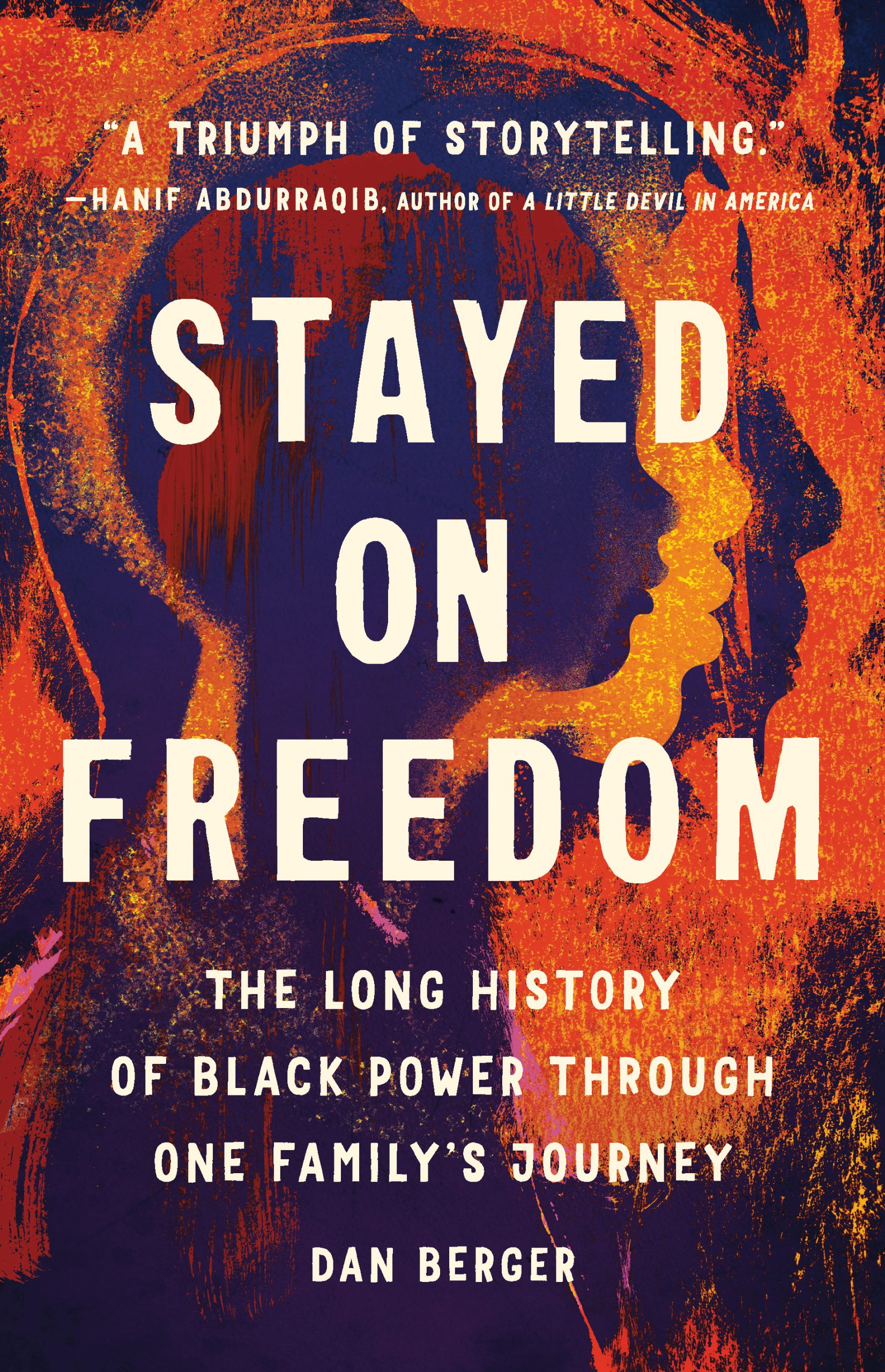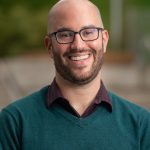What we now call mass incarceration stems from events of the 1960s. The meteoric rise in the numbers of people being imprisoned began in 1973. But it was made possible through persistent expansions of police authority and state surveillance that started earlier. At its core, mass incarceration is a repressive form of social control. Yet the growth of carceral power was neither inevitable nor easy. It was fought every step of the way by the people it impacted most deeply—including the Black Power activists it antagonized.
It was through my interest in such radical social movements that I first came to study incarceration. Particularly in the United States, where carceral power functions as a religion of statecraft, it is impossible to talk about one without talking about the other. Recognizing the intertwined histories of activism and incarceration, of repression and resistance, gives us a fuller trajectory of the organizations and strategies that anticipated contemporary decarceral movements. And when we listen to the individual movement participants, we can also see what it means to do this work—the subversive joy of a successful rebellion, the shock of recognition that comes with learning the layered extent of carceral authority.
That blend of joy, aggravation, discovery, and perseverance animates my book Stayed on Freedom: The Long History of Black Power Through One Family’s Journey. The book is a biography of longtime, little-known Black Power organizers Michael Simmons and Zoharah Simmons. Through them, it offers a window into the endurance needed in the pursuit of social justice. The pair met in the civil rights movement, married under the aegis of Black Power, and remained close comrades after they divorced but continued their organizing.
Stayed on Freedom is not a history of mass incarceration, and yet the history of Black Power is inseparable from the history of mass incarceration. Even before the carceral state metastasized to its current scale, policing and incarceration loomed large for Black Power activists—as ubiquitous foes, as stubborn opponents who could, nevertheless, at times be bested.
The following excerpt from Stayed on Freedom provides two snippets into contesting mass incarceration at the moment of its creation. The first offers a glimpse into the two-and-a-half years (1969–72) Michael spent in prison for refusing induction into the U.S. military. The second recounts how Zoharah joined a fledgling national effort to combat government surveillance in the mid-1970s, at a time when cities were becoming subject to increasing—and increasingly aggressive—policing. These braided stories illuminate the tenacity with which Black Power activists resisted state violence. Whatever the differences are to our current carceral landscape, I hope the creative sparks of the past may still offer light to those following the same north star toward freedom.
Mike was sent to prison in 1969 as a conscientious objector for refusing to be drafted into the Vietnam War. In Allenwood federal penitentiary in Pennsylvania, which did not allow phone calls, Mike’s world seemed to be getting smaller. Mike wrote letters and received visits, but the men around him became his primary social life.
As he earned a reputation in the prison for his bravery, he sought to be heard for his morality. Don’t take my TV, he would advise people of their pre-prison antics. Go to the TV store and take all the TVs. As was true of the larger movement brewing among Black incarcerated people at the time, his was a message of solidarity, not legality. The pimps tried to maintain detachment, claiming they never harmed their own sisters. But it’s somebody’s sister, Mike replied.
During his first winter in prison, Mike wrote a play about Black history, which incorporated passages from notable figures such as Frederick Douglass and W. E. B. Du Bois. In recent years, Black educators and students around the country had transformed an early twentieth-century idea of “Negro History Week” into something called Black History Month. It didn’t yet have official buy-in, but students were using it as an organizing opportunity. Inspired by the idea, Mike hoped his play could educate folks incarcerated in Allenwood about the Black radical tradition. He had never fancied himself a writer. But the prison was full of outcast autodidacts who had learned to play guitar, write poetry, file lawsuits, or carve wood. Why couldn’t he try his hand at being a playwright?
More from our decarceral brainstorm
Every week, Inquest aims to bring you insights from people thinking through and working for a world without mass incarceration.
Sign up for our newsletter for the latest.
Newsletter
He corralled other Black men incarcerated in Allenwood to help mount a production. Everyone kept at it, and they were able to perform it in front of the prison population. It was enough of a success that, when the next February drew near, Mike put together another play, this time with a number of other incarcerated men who wanted to honor one of their number who had been transferred elsewhere.
The result was Mirror on Lennox Avenue (1971), a satirical look at what sent people to prison. Ventriloquized through the characters and weaving in contemporary R&B music, the men reflected on the predatory crimes of poverty. Mirror on Lennox Avenue was the first time many people, including the participants, had seen a play. They loved the performance. The play drew from the well of incarcerated talent: men incarcerated in Allenwood had written, performed, and designed the entire play. Mike marveled that the set, a silhouette of downtown Manhattan, was fit for Broadway.
If not Broadway, it was at least ready for Bucknell University, a small liberal arts school located twenty minutes away. Allenwood was a minimum-security prison camp: because of this, it would sometimes permit groups of visitors, and even more rarely allow supervised trips out. Because of this, a Bucknell professor who was teaching a class on human rights and social movements had been able to arrange for his class to attend the play at Allenwood. Then, even more remarkably, he was able to arrange for the men to travel to perform the play at the university. That meant a night out of prison. Mike was elated. He set to work immediately: he doubled the speaking parts and stage directions so that more people could enjoy a few hours reprieve from the prison. People whose intellectual talents had never been recognized now set foot on a college campus as invited guests.

Not long after Mirror on Lennox Avenue was performed at Bucknell, another theater piece was performed at Allenwood—this time by people who visited from outside. The fallout from it would make clear the limits of how much incarcerated unity prison officials would tolerate.
Some of Mike’s comrades from the Steering Committee for Black Students (SCBS) at Temple University had formed a cultural group called Seeds of Blackness, and they obtained permission to have their group perform at Allenwood. Even before it started, there were problems. The performance was almost canceled after hundreds of incarcerated men marched to the visiting room to protest a disciplinary write-up two of their fellows had received for not being in their beds at nighttime count. Then, the morning of the show, prison officials snatched up George Mische. Mische was one of the Catonsville Nine, a group of Catholic leftists who had destroyed almost 400 draft files in Maryland in 1968, a major escalation of draft resistance. Mische waged a more minor rebellion at Allenwood, stealing 15 hard-boiled eggs from the mess hall and then protesting a guard search of his property. When authorities placed Mische in a truck to transfer him out of the facility, a group of conscientious objectors staged an impromptu sit-in to block them. Officials ultimately relented.
Afterward, prison staff demanded that Mike cancel the Seeds of Blackness performance. He refused, and, perhaps fearing more unrest, prison officials relented and allowed Seeds of Blackness in. About thirty SCBS members, together with some honorary members including Zoharah (then still married to Mike), participated. They brought with them large djembe drums and ornate costumes, although Allenwood wouldn’t let them wear the metal ankle chains they usually performed in. Entitled The Ritual (1971), the performance was an Afrocentric mixture of poetry, drumming, and dance. Performers reenacted revolts by enslaved people, chanted Claude McKay’s legendary 1919 paean to resistance, “If We Must Die,” and celebrated Africa as the birthplace—and future—of civilization. Even racist white incarcerated men, in attendance simply for a night off, were entranced and cheering. It was a jubilant affair, an orchestrated chaos the joy of which lingered into the evening.
The next morning, Mike and eighteen others—mostly conscientious objectors but also apolitical people Mike played chess with—were called into the visiting room. Guards in full riot gear, batons at the ready, loaded them onto a prison bus and sent them to what folks incarcerated there called “The Wall”: United States Penitentiary, Lewisburg.
Only twenty minutes from Allenwood, Lewisburg was a different world. It was a medium–maximum security prison, harsh and severe. It had cells, not dorms. At first, the prison held them seven or eight people to a cell. After they went on hunger strike, the prison transferred all of them to solitary confinement. The thick steel doors and isolation from the rest of the population undercut their ability to organize. Segregation was divided into five levels. Mike and his friends were in the most severe level: alone in a cell, sparse meals brought to them twice a day.
Immediately after Mike’s transfer, Zoharah started getting reports on his well-being from Fay Honey Knopp, a well-respected activist who visited as part of a Quaker prison fellowship. Then, as soon as she was able to arrange childcare, transportation, and approval to visit, Zoharah herself made the trek from her home in Philadelphia. By the time she visited, they hadn’t seen each other in weeks; the visit was shrouded in a mutual but understated concern at his isolation. When he walked into the visiting room, Mike’s chest tightened. He had been separated from most human contact, and the sight of Zoharah overwhelmed him. His body tensed at the sight of her, the reminder of her, of life beyond the small cage in which he had been spending every day. If he gave in to his body’s urge to cry, he might never stop. He barricaded his emotions behind shallow breathing and pat assurances.
After she left, officials moved Mike to the prison hospital. He had been on a water-only fast for three weeks, and they were starting to panic. Mike continued to refuse food in the hospital until Robert Thompson came in. Thompson, an Air Force veteran, had been in Lewisburg since 1965, convicted of sharing military information with the Soviet Union. Is there anyone here named Simmons? the husky thirty-five-year-old asked in the prison hospital. When Mike responded, Thompson shared the bad news. I heard they’re about to send you to Springfield, he said, referring to the federal prison hospital in Missouri (Medical Center for Federal Prisoners, Springfield). They’re going to declare you insane. And when they declare you insane, your time stops until you become sane again. Mike had witnessed how incarcerated people declared insane were rendered catatonic by Thorazine. Self-preservation kicked in. Fuck the fast, he thought.
Mike hadn’t given up all hope, however. With eight other conscientious objectors, he joined a lawsuit against the federal Bureau of Prisons. Weeks after the Attica massacre in September 1971, Mike was in court for a hearing. The lawsuit alleged that the men had been denied an opportunity to challenge or appeal the prison’s decision to transfer them out of Allenwood, and that they had been punished more harshly as a result of their political motivations. On the witness stand, the warden likened himself to the HMS Bounty’s Captain Bligh, saying he’d acted to prevent mutiny.
For an isolated Mike, the trial was an enjoyable opportunity to reconnect with his troupe of troublemakers, and even the admission of the “mutiny” seemed like a fitting testament to the collective power they had built inside. Both the trial judge, a Nixon appointee, and the Third Circuit Appellate Court upheld the prison’s actions, agreeing with the picture Warden “Bligh” had painted of would-be saboteurs.
By the time those rulings came down, however, Mike had already been released from prison—in February of 1972—and was working for labor and tenants rights at the American Friends Service Committee (AFSC) in Philadelphia.
Mike was one of many organizers hired by the AFSC in the early 1970s. Some, like him, had been political prisoners; all had cut their teeth in social movements of the 1960s. By 1975 Zoharah had joined their number. While Michael, as he was now increasingly known, was focused on organizing Black workers, Zoharah was coordinating a new AFSC project investigating government surveillance. Though they had, by now, divorced, they remained close friends and comrades navigating a new context in the Quaker social justice organization.
The AFSC had been a target of government spying, both directly and as a result of its coalitional work. Revelations of government malfeasance had featured prominently in the news since March 1971, when an unknown group of pacifists had broken into a regional FBI office in Media, Pennsylvania. The files they’d stolen had revealed a massive, years-long FBI campaign to (in its own words) “expose, disrupt, misdirect, discredit, or otherwise neutralize the activities of Black nationalists” and other left-wing groups. The FBI called its macabre effort a counterintelligence program, or COINTELPRO. Under its auspices, the FBI had spied on dissidents, broken into their offices, sent poison-pen letters to sabotage coalitions, planted false stories in the press, infiltrated organizations, and coordinated police attacks. The FBI had even sent an anonymous letter to Martin Luther King, Jr., encouraging him to commit suicide.
Among the initial recipients of files taken during the raid in Media, the AFSC joined a lawsuit against the FBI and initiated its Project on Government Surveillance and Citizens’ Rights to research the impact of state repression on social movement. Its focus included not just the FBI but the CIA, IRS, U.S. military, and local police forces.
As field organizer for the AFSC project, Zoharah’s job included working with AFSC members and affiliates to apply for records of their surveillance under the Freedom of Information Act, as well as to develop public educational materials about, and legal remedies to, political repression. She worked closely with labor lawyer turned civil liberties researcher Frank Donner, who directed the ACLU’s Project on Political Surveillance.
Donner, who spoke in Philadelphia the summer of 1976, had recently been subpoenaed by the House Un-American Activities Committee for representing accused communists. Donner’s talk in Philadelphia focused on the long history and chilling impact of “Red Squads.” These anti-communist surveillance units of metropolitan police departments targeted all manner of political activists—each city with its own FBI. Though formally disbanded by 1976, many cities had reconstituted their Red Squads under other names. In Chicago, it was the Gang Intelligence Unit, while the Mississippi State Sovereignty Commission kept tabs on the civil rights movement and served as the umbrella coalition for the police, the Klan, and the Chamber of Commerce.
Zoharah, in attendance at Donner’s talk, had already known about the Sovereignty Commission from her experiences during Mississippi Freedom Summer. But she hadn’t known how similar forms of surveillance, infiltration, and repression had been used as a bludgeon against social change. This revelation would go on to have a tremendous impact on her work with the AFSC, which would focus on local police departments.
Her goal was to create a handbook for how activists could contest government surveillance and develop local campaigns against police abuse. She spent her first months on the job sorting through records AFSC affiliates had garnered from different police agencies. While the Media FBI raid had focused media attention on federal wrongdoing, Zoharah wrote to AFSC contacts, “very little has been mentioned concerning the role of local police in the intelligence network.” But, she insisted, “the most important, yet toughest-to-get-at segment of the intelligence network is the local and state police red squad.”
Policing was an ever-present problem in Philadelphia. As the city’s police commissioner, Frank Rizzo had bragged on national television about having files on 18,000 Philadelphians and 600 political organizations. After years of brutalizing Black activists, Rizzo was rewarded by Philadelphians with the office of mayor. He didn’t change his stripes. In 1973 Mayor Rizzo was caught spying on city councilors with the assistance of a team of over thirty police officers. He was also accused by a state commission of blocking investigation of police brutality in 1974, and won reelection in 1975 after promising that his response to his opponents would “make Attila the Hun look like a faggot.”
Going into the summer of 1976, Rizzo requested that the federal government send 15,000 National Guardsmen to quell what he baselessly described as a planned insurrection during the city’s bicentennial celebrations. Zoharah joined the 30,000 people who peacefully protested in Philadelphia for a “Bicentennial Without Colonies” on July 4. Three days later, she embarked on a month-long research trip to investigate police surveillance that would bring her to eleven cities in six states, deep into the land of the unfree.
The more she traveled, the more overwhelmed she felt at the scale of police surveillance. In Chicago, she toured the apartment where police had murdered Black Panther leader Fred Hampton in his bed in 1969. The community had preserved it as a kind of memorial, the walls still peppered with bullet holes. Seeing it, she shuddered at the memory of FBI agents coming to check on her and other Freedom Summer organizers in 1964. In Colorado she learned that police infiltrated antiwar groups, harassed gay bars, and planted evidence against Chicano radicals. In Los Angeles, she met with Frank Wilkinson. As a key figure in the Los Angeles Housing Authority, Wilkinson had overseen the city’s first integrated housing development before being fired for refusing to answer whether he had been a member of the Communist Party of the United States of America. Wilkinson headed the National Committee Against Repressive Legislation (NCARL), which, along with the ACLU, had been a central coalition partner in Zoharah’s work. Wilkinson had spent much of 1961 in prison, along with civil rights activist Carl Braden, for refusing to answer questions from HUAC on the grounds that it violated the First Amendment. Everyone in the city seemed terrified of the police. Beyond routine acts of violence, LA police kept surveillance files on children as young as seven and seemed to harass anyone who publicly questioned their authority. Indeed, after a long day of interviews, Zoharah returned to her hotel room to find that it had been ransacked by an unknown interloper.
Upon her return to Philadelphia, Zoharah would become the AFSC representative to a nascent coalition against government surveillance. Originally called the National Campaign Against Lying and Spying, the effort launched in February 1977 as the Campaign Against Government Spying. More than sixty organizations endorsed the campaign, a broad cross section of progressive and radical organizations that had been targeted by various law enforcement agencies. Zoharah found herself in the familiar role of trying to align the efforts of respectable, deep-pocketed liberal and faith-based organizations with those of unruly grassroots groups—Black, Chicano, and Puerto Rican nationalists, international solidarity activists, environmentalists, and others. Even the Church of Scientology was on board.
The anchor organizations were mostly white, however, and at the campaign’s founding convention, Zoharah insisted that the group prioritize “Third World and victim participation in the Campaign.” She signed up to be a member of a five-person “special committee” that would propose ways to make the campaign responsive to the communities it claimed to serve. Her other committee members came from NCARL, the National Conference of Black Lawyers, the National Organization for Women, the National Jesuit Social Apostolate, and the Puerto Rican Solidarity Committee. After a three-month process, they recommended that the campaign reserve seven (of twenty-five) seats on the executive committee for “representatives of minority/victim organizations,” with that determination to be made by the special committee. They also recommended that the campaign provide scholarships and other support to regional branches to attend national meetings and empower local groups through “regional conclaves” that would serve as hubs for strategy and action.
The campaign met often in Washington, D.C., where several of the participating members had national offices. But to Zoharah, the most exciting action was taking place in the local branches. She was particularly inspired by a trip to Minnesota, where she spent a freezing winter week observing the efforts of Native American activists and their allies investigating the FBI. Surrounded by snowbanks taller than she was, Zoharah’s teeth chattered. Her hosts took her to buy long johns and sturdy boots. She didn’t know it could be so cold. Inside, as people visiting from South Dakota’s Rosebud Indian Reservation revealed FBI efforts to break their movement, Zoharah warmed by the fire of public testimony.
After more than twenty years, Zoharah would leave the AFSC to teach at the University of Florida. She arrived there the same year that I started as a freshman. We met during what was, for both of us, our first year at the university. She quickly became a mentor to me in the activism I was doing both on campus and off. Learning from her also inspired me to learn more about the Black struggle for freedom: historically and in the present, locally and around the world. It helped set me on the path toward becoming a scholar. I met Michael soon after I graduated and moved to Philadelphia. Even though we met in Philly, the city in which he was born and raised, by the time we met in 2004, he had relocated to Hungary—the extension of what had, by that point, already been nearly two decades of peace and justice organizing in Eastern and Central Europe for peace, feminism, worker rights, and Roma self-determination.
Michael’s time in prison and Zoharah’s period tracking government surveillance were two pivotal moments in long political lives. Now in their late seventies, Michael and Zoharah remain close friends and political comrades. And both remain committed to freedom. Their experiences show that the fight against the carceral state is embedded in a larger project of building a just world.
Adapted from Stayed on Freedom: The Long History of Black Power through One Family’s Journey, by Dan Berger. Copyright © 2023. Available from Basic Books, an imprint of Hachette Book Group, Inc.
Header image: Courtesy of Aishah Shahidah Simmons family collection


